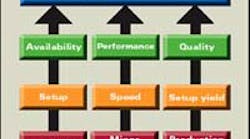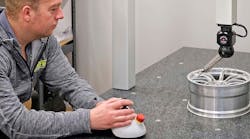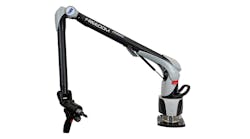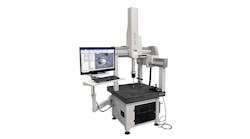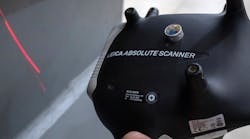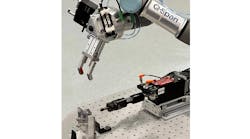Shops can zero in on spending for equipment effectiveness.
By Douglas Peterson,
GE Fanuc Automation Americas Inc.,
Charlottesville, Va.
Edited by James J. Benes, associate editor
Mr. Peterson is vice president, CNC business at GE Fanuc Automation Americas Inc. in Charlottesville, Va.
Shops competing with offshore-labor rates need an immediate investment in technology to boost efficiencies and reduce costs. The big question they face is where to spend their improvement dollars for greatest impact on productivity.
Over the past year, GE Fanuc Automation has developed a technique to help end users better target investments in manufacturing operations. The technique combines the concepts of Six Sigma and Overall Equipment Effectiveness (OEE).
OEE is a percentage calculation of actual productivity compared with an optimum value. It eliminates waste or production losses in manufacturing processes by letting shops identify bottlenecks and prioritize investment.
Shops calculate OEE by multiplying percentage of availability by percentage of performance by percentage of quality, where:
Each of these components contains two major loss categories for a total of six major OEE losses: Availability losses include setup time and breakdowns, performance losses include speed and minor stoppages, and quality losses include setup and production-yield losses. Shops determine investment targets by analyzing and prioritizing the contributing factors to these losses.
Combining OEE with Six Sigma's define, measure, analyze, improve, and control methodology (DMAIC) for process improvement shows shops where to improve processes or invest in technology to address major availability, productivity, or quality losses.
The first step is to define the priorities and expectations for each metric in terms of the six major OEE losses. The next step is to measure the baseline or current performance of the three OEE components. The measurement system guarantees a manufacturer is gathering accurate data for analysis of the root causes of process variations.
In the improve phase, shops make investments and fix these root causes of problems. Finally, they set up a control plan so that solutions/fixes deliver the intended results.
A robust shop-floor data-collection and plant-intelligence-software system is critical to a successful OEE-improvement program. Such a system provides network connectivity to machine tools and other assets and provides drilldown intelligence at the machine-line or cell level. These systems improve asset use by helping shops understand shop-floor dynamics, minimize downtime with predictive maintenance, determine causes of machine downtime and idleness, and provide baseline measurements and reporting on OEE. They also provide information to develop an effective control plan for process improvement. Also, the best systems provide a migration path for larger cells and connect to enterprise solutions for more-complex OEE analysis.
Availability, performance, and quality
Shops minimize setup losses through the use of probing. They tackle breakdown losses through preventive-maintenance programs, tool-breakage detection, and use of the latest CNC technology with advanced maintenance features and reliable hardware.
As for speed losses, manufacturers are employing adaptive-control to optimize feedrates based on a programmed spindle load. In some cases, shops can reduce cycle times 40% — and increase tool life — by achieving a more-constant tool load. Adaptive control also slashes costs by eliminating the need for manual feedrate override and automatically optimizes every part in real time by compensating for material variations, such as variations in hardness or the presence of impurities.
Shops can also boost performance by investing in the latest CNC technology through machine tool retrofits. Higher-speed machining with improved accuracy and faster toolchange with more advanced PMC functions are a few of the many advantages to upgrading to the latest CNC technology.
Minor stoppage losses in the OEEperformance category are minimized through improved tool-life management and investment in probing solutions to accomplish on-machine parts inspection.
Yield is dramatically improved through probing to reduce parts loss during setup. In addition, tool management, adaptive control, and tool-breakage detection improve production yield by reducing scrap from tooling wear and breakage.
To ensure quality and yield improvements, machine tools must run at maximum performance with high accuracy. Since machine tools wear and accuracies and performance levels vary over time, a machine should be checked periodically with a laser and ballbar to monitor changes.
To maintain accuracies, shops should adjust CNC features such as pitch-error compensation, straightness compensation, and backlash compensation. They also need to adjust bell-shaped acceleration/deceleration before the interpolation and jerk (abrupt changes in acceleration or deceleration) to compensate for performance. Periodic machine maintenance ensures performance and accuracy levels stay high to drive yield improvements.
